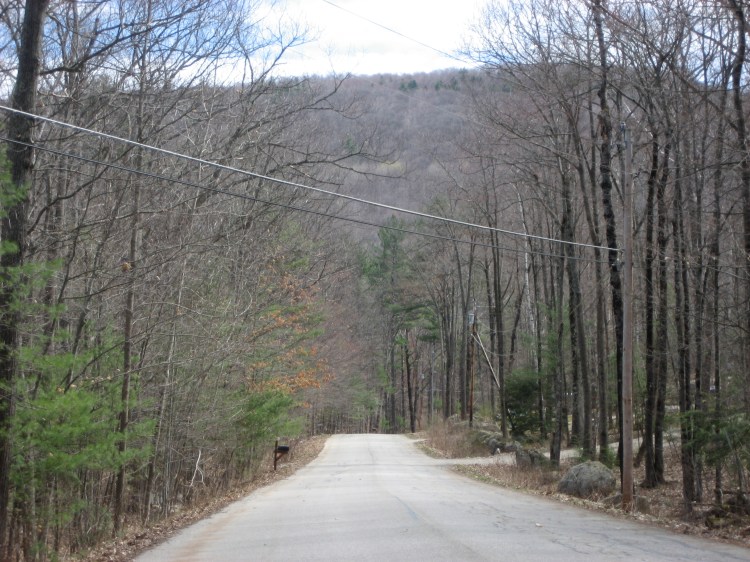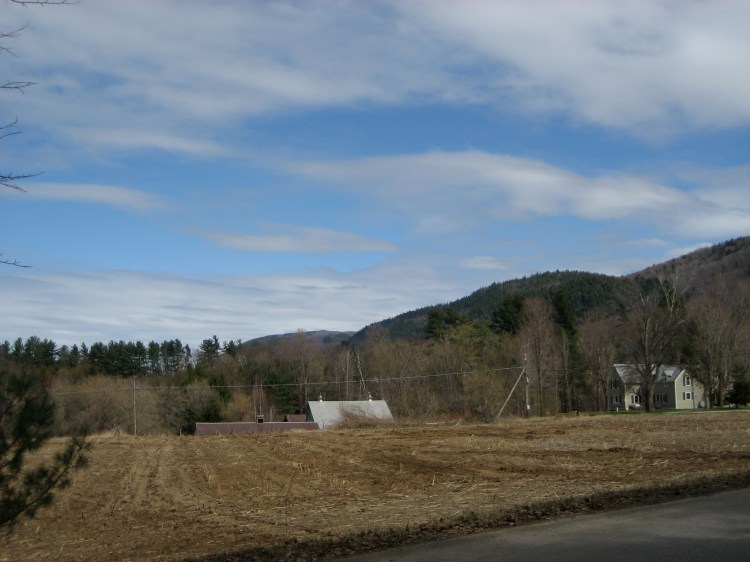Current reality: we live at the foot of Vermont’s Green Mountains. Whenever we look out our front windows, walk out our front door, or drive home, we see the mountains.

True confession: I’ve never been much of a mountain person.
It’s not that I actively dislike mountains, it’s just that for most of my life they haven’t been the scenery that most fills me with awe, inspiration, or deep thoughts about life. I’ve never said, “Boy, I’m feeling pretty wrung out. I think I’ll head to the mountains for some restoration!”
No, that would be the ocean for me. Maybe I’m lazy when it comes to awe, inspiration, and deep thoughts, but I’ll take the ocean every time. The ocean is powerful; it’s in constant motion, crashing onto land and grinding everything in its path to sand, just as it’s done without pause for millenia. Talk about awe: try standing on a beach watching the waves break, hearing the roar of the water, and thinking about how vast all that ocean is, and how deep! Then, for inspiration and restoration, nothing beats a walk along the beach. It’s so flat, so easily traversed, you could walk forever (as long as you don’t hit a gated condominium complex) — free foot exfoliation included. Added bonus: because of the breeze off the ocean, there are usually no bugs.
Now, let’s take the mountains. They may be strong and solid, but they just sit there and stare. They’ve sat for millenia, like sleeping bullfrogs in the sun. The Green Mountains, which have been weathered down so that their highest peak (Mt. Mansfield) is only 4,380 feet, especially look like squat, lumpy bullfrogs. Not exactly awe inspiring; the first time he saw them, Erick said, “I see the foothills, but where are the mountains?” That’s because he’s from Northern California, which does boast some pretty impressive mountains: the Sierra Nevada. But even those mountains never inspired awe in me so much as fear; they’re so harsh and steep and forbidding, all I can think about driving through the Sierras is the Donner Party and whether I’d eat somebody else for survival.
The other thing about mountains is that, to really experience them, you have to climb them, which is a lot of hard work. Not much time for reflection or inspiration when you’re huffing and puffing and trying not to roll down. All that work so you can reach the summit and look around — but I’ve never been a big fan of heights. And mountains usually host lots of bugs: ticks, mosquitoes, and any number of other annoying, buzzing, stinging insects.
To sum it up, my impression was always that you go to the ocean to feel small. How else could you feel next to that immense pounding, crashing, noisy motion? On the other hand, it always seemed to me that you go to the mountains to feel big. You climb a mountain, it doesn’t fight back or even move, but you earn a sense of victory; when you look down from the summit, you get to feel like God.
I’d generally rather feel small than big, so I’ve never been much of a mountain person.
Which is funny, because when I left my childhood home (in a flat, flat suburb), it was to attend college in Massachusetts’s Berkshire Mountains. A college that had as its alma mater song a little ditty called “The Mountains” (“The mountains! the mountains! we greet them with a song….”) My maternal grandmother’s favorite Psalm, read at her funeral, was Psalm 121, which begins: “I lift my eyes up to the hills — where does my help come from?” and which has been set to music as a song called “I Lift My Eyes Up To The Mountains” — a song that I’ve sung at every church I’ve attended. In New York City, we lived in a 28th floor apartment. We then moved to Berkeley, which has a landscape dominated by the Pacific Coast hill range (the “Berkeley Hills”) along its eastern border. And now we live at the foot of the Green Mountains. Rather than the ocean, it’s mountains, hills, and heights that have chased me throughout my adult life. And mostly I’ve shrugged and thought, “Meh.”
But since I’ve been staring at the mountains for almost a year now, I thought I should probably write about them. And you know, it’s pretty daunting to write anything in this age of the internet, because I could probably Google any topic and find 1,895,947 people who’ve written down my exact thoughts, only better. Clearly, I had to take a walk. So I walked around our house, and looked up at the mountains, and said, “Okay, mountains, gimme something. Anything.”
They just sat there and stared.

It took me a minute, but then I realized that that was the answer. I saw the mountains like I’d never seen them before. These Green Mountains, they extend 280 miles through Vermont, but they’re part of the Appalachian Mountain range, which was formed about 480 million years ago. They were once among the tallest mountains in the world, until time wore them down to their current rounded form. The Green Mountains support a dense boreal forest that withstands harsh winters, which is why they can honestly be called “green” year-round. In other words, these mountains are survivors. They don’t need to show off, or move, or make noise (although I have found that on nights when the wind races down them, the roar rivals any ocean). They’re so humble, they let you climb all over them. All they need to do is sit there, and we can turn our eyes to them for help because in their massive silence they say: “Whatever it is that you’re going through, we’ve seen it. We’ve survived four hundred million years of wind, rain, snow, and sun, and we’re still here. We’re weathered, but we’re still here.”
When I saw the mountains this way, I finally felt small — small in the best, most comforting sense, like a little child who crawls into a parent’s arms and knows it’ll be okay. The ocean, I realized, is like life: it beats and batters without stopping. But the mountains, they’re US.


greg
As a mountain man, myself, who finds the ocean a nice “second” in terms of inspiration, thanks for these thoughts. One nice thing I have found for myself and our girls is that the local mountains tell us where we are–they give our lives orientation. When we look up and see the hills, we know where we are in the Champlain valley–which way we are facing, what towns are close by, what rivers are even closer. In the mid-west I really disliked having the street grids pressing their concrete directions into my life, looking into the mid-distance to locate the man-made signs of orientation and confirmation. These mountains have whispered their song to me, and even though it took a long time to recognize it, I rest secure in their embrace.